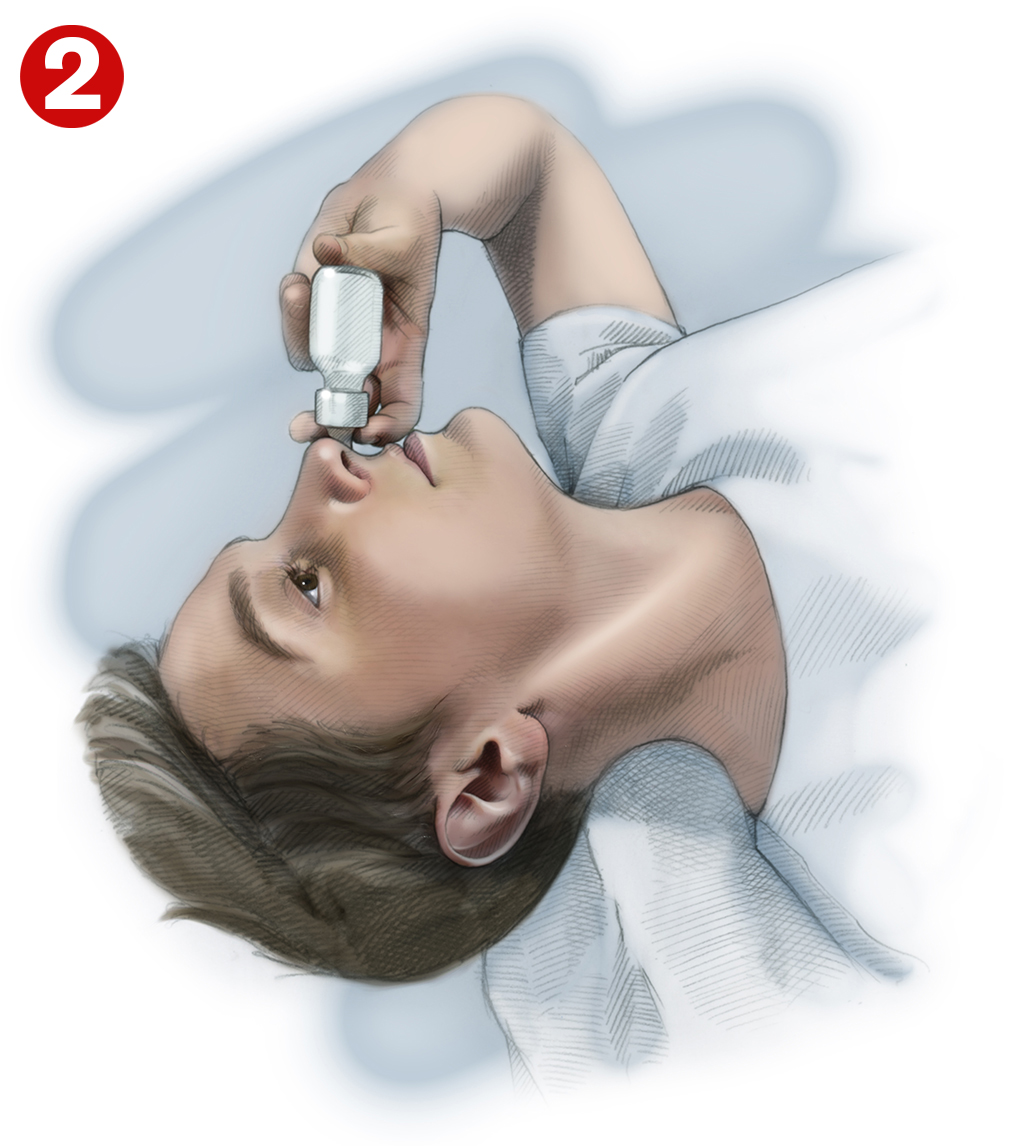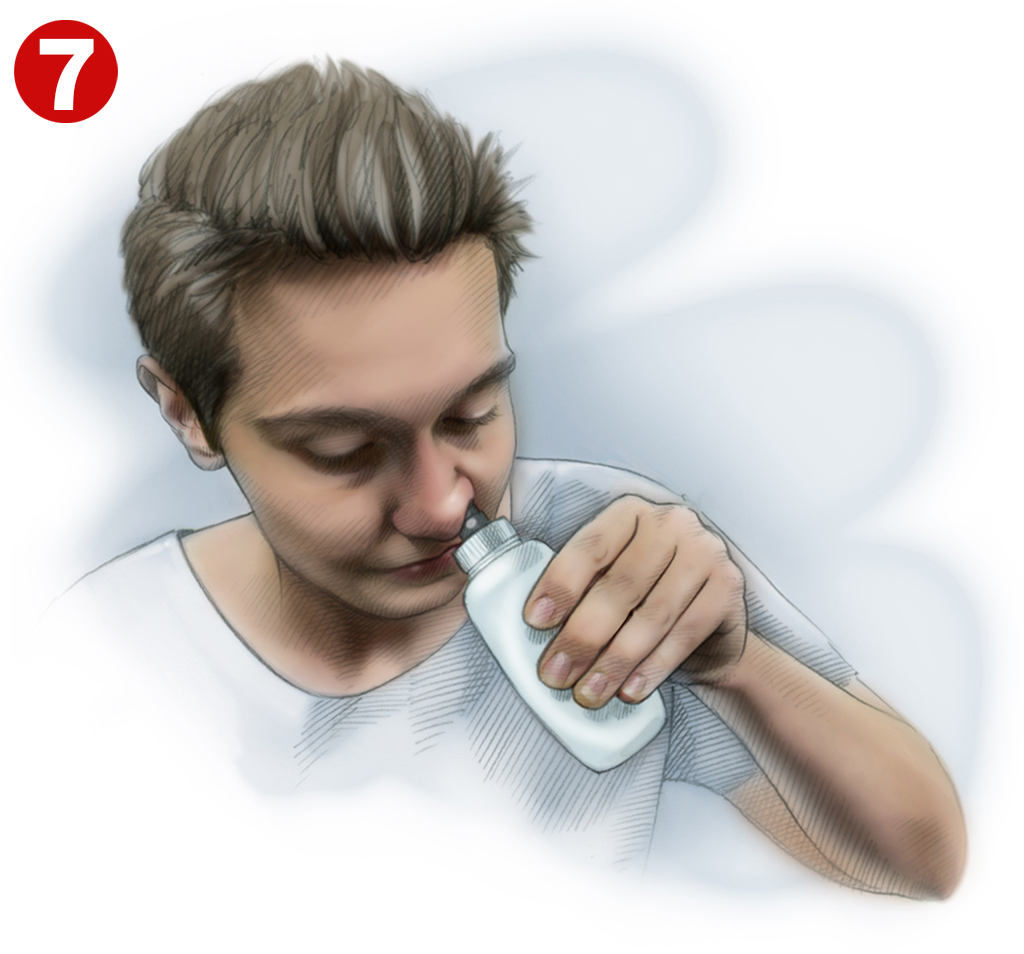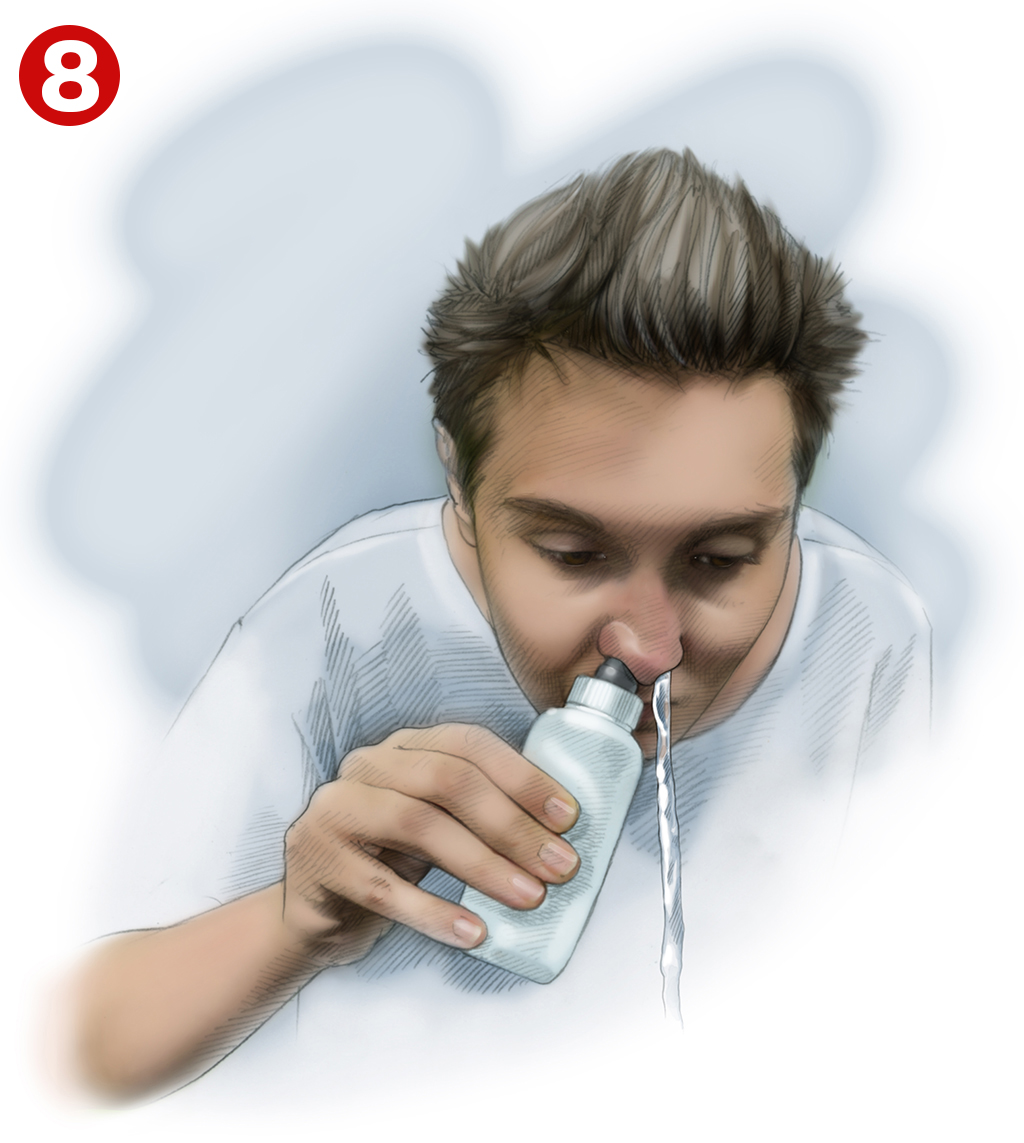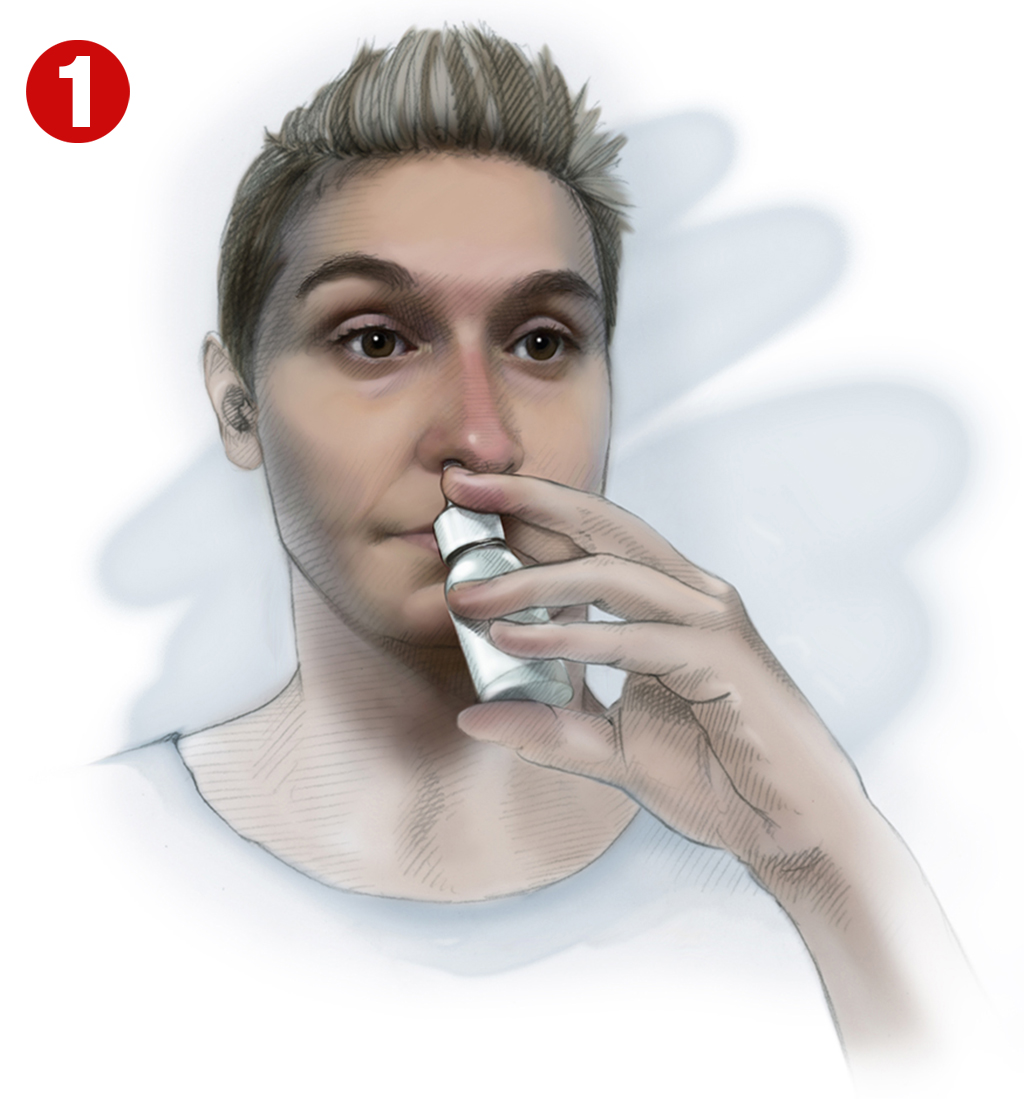Natural treatments and tips (DR Axe)
How to use:

WWW.DNAILLUSTRATIONS.COM
Using nose drops . Kernow Clinical Commissioning Group. 2021.
https://rms.kernowccg.nhs.uk/content/files/
Using%20nose%20drops%20and%20sprays.
pdf(accessed Oct 2021).

WWW.DNAILLUSTRATIONS.COM

WWW.DNAILLUSTRATIONS.COM
Principi N, Esposito S. Nasal Irrigation:
An Imprecisely Defined Medical Procedure.
IJERPH 2017;14:516. doi:10.3390/ijerph14050516
How to perform nasal irrigation. UpToDate. 2021.
https://www.uptodate.com/contents/image?
imageKey=ALLRG%2F71059&topicKey=
(accessed Oct 2021).

WWW.DNAILLUSTRATIONS.COM